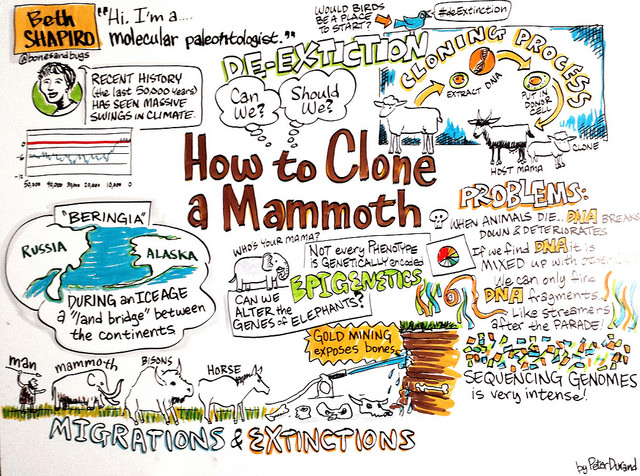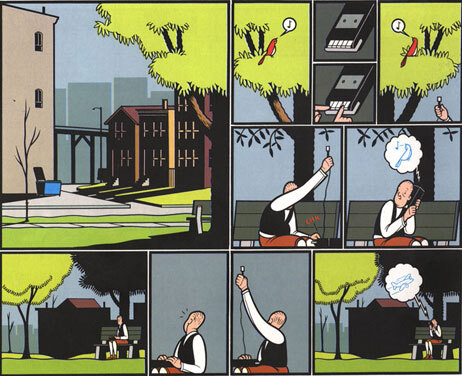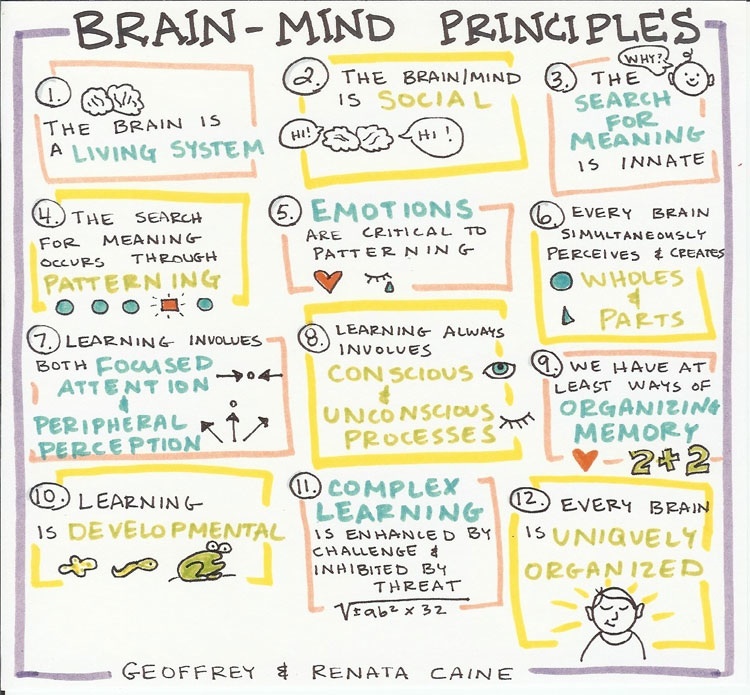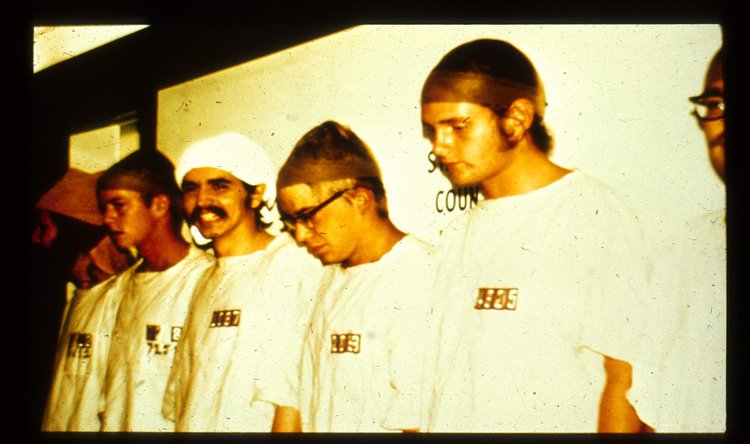Race, Justice, and Eliminating the Death Penalty
/The Catholic Charities Archdiocese of New Orleans hosted a Symposium for Systemic Change. Speakers addressed racism, eliminating the death penalty, and civic engagement.
Read MoreThe Catholic Charities Archdiocese of New Orleans hosted a Symposium for Systemic Change. Speakers addressed racism, eliminating the death penalty, and civic engagement.
Read MoreLa Ciudad de las Ideas (The City of Ideas) is an International “Festival of Brilliant Minds”... a celebration of creativity and curiosity of the human being, held annually in Puebla, Mexico.
Read MoreABOVE: Book trailer for How to Clone a Mammoth by Beth Shapiro (Princeton University Press, 2015)

In the summer of 2010, I went kayaking on the Huntington Harbor with a colorful group of scientists. We were on the coast of New York State for the week as part of the PopTech Institute's Science Fellows Program taking place at the Cold Spring Harbor Laboratory, a stately 125-year-old research and education institution at the forefront of molecular biology and genetics.
While gliding around ridiculously oversized yachts and dodging speed boats, I pitched an idea to one of my co-kayakers, Beth Shapiro, a research scientist then at the University of Pennsylvania:

Beth Shapiro describes the science of de-extinction at the 2010 PopTech Conference.
Beth Shapiro has the coolest job ever. A self-proclaimed molecular paleontologist — or paleogeneticist — Beth looks more like a stunt double for the Icelandic pop singer Björk than a woman who does what she does for a living.
As part of the 2010 PopTech Science Fellows program, Beth Shapiro describes her cutting-edge DNA research, I illustrated some of the fun details. Her research is helping us make informed decisions about how to preserve the species that are currently under threat.
Shapiro and her team collect both partial and fully-preserved giant mammals from the Pleistocene epoch — giant sloths, giant wolves, giant bears, giant beavers (that one always gets a chuckle), and of course giant wooly mammoths. So, naturally, I wanted her to take me with her on the hunt!

ABOVE: "Beringia land bridge-noaagov" by NOAA
Well, that is what Shapiro has done in her new book, How to Clone a Mammoth: The Science of De-Extinction; she takes the reader on the hunt in Beringia — also called “Bering Land Bridge” — where these giants roamed the dry, grassy plain that once connected Asia with North America during periodic ice ages.

Shapiro on the hunt for bones at the site of a hydraulic gold mining operation in Alaska.
In her hands-on research, Shapiro digs in dirt and hauls bones around, rides in a rustbucket Russian helicopter, camps among a gabillion mosquitos, and labors in the lab to piece together chopped up strands of DNA.

In the fall of 2014, I ran into Beth and her mammoth bones again. This time, she was one of the presenters for the National Academy of Sciences and The Kavli Foundation Frontiers of Science program in Irvine, California.
This symposium brings together some of the very best young scientists to discuss exciting advances and opportunities in their fields. I was fortunate enough to scribe for both her National Academies of Science public presentation, part of the Distinctive Voices lecture series.

Beth Shapiro and Peter Durand at the National Academy of Sciences in Irvine, California.
See full presentation (52 minutes)
Once again, Beth's presentation, her personality, and her message were a hit.
She presented to a full auditorium, walking the audience through the challenges and possibilities that cloning a mammoth make available, namely, the science of de-extinction.

After her presentation, we looked at the resulting image, and I did not even have to pitch her... we both had the same idea:
So in November of 2014, we started the process. Along with the team at Princeton University Press, Beth began working on the script and the Alphachimp team began coaching her on how to record a voiceover. No easy task!
Shapiro is now associate professor of ecology and evolutionary biology at the University of California, Santa Cruz. She also runs a busy research lab, carries a full teaching load, parents two small children, and is in full-scale promotion mode for the book's publication.
At one point, Beth lost her voice giving talks, teaching, and catching cold from her kids.

Initial concept sketches completed on an iPad.
In parallel with crafting the script and voiceover, the Alphachimp team worked through sketching out the ideas and illustrations.

A preliminary sketch showing image placement and the camera movements across the painting.
Originally, we considered the whiteboard time-lapse style, but that did not capture the richness of Beth's adventures and the main goal of her work and the book:

In the end, we created a watercolor painting (with some animation sprinkled in) that allows Beth's voice to express the wonder of the science and to inspire audiences to read the rest of this amazing story.

(via http://twitter.com/IFVP)
 Jimmy Corrigan, The Smartest Kid On Earthis an example of a comic where the art is doing its job.(Random House)
Jimmy Corrigan, The Smartest Kid On Earthis an example of a comic where the art is doing its job.(Random House)
Glen Weldon posts on NPR Arts correspondent Lynn Neary's piece on All Things Considered about the new graphic novel adaptation of Ray Bradbury's classic Fahrenheit 451. He breaks down what's right and what stinks about the last generation of graphic novels, and how the masters of the form make it work.

From Diane Durand:
How do we learn? How do we make connections? T
hese are questions I have wondered for many years. I spent the early part of my career trying to understand and enhance how adults learn as individuals and groups. Now I am raising two children ages one and five. The five-year-old has made incredible connections in her brain between colors, science, play, and reading.
Now as I work with a new little one, I am trying to remember: "What did I do with her older sister to help her learn?"
Life and learning is incredible.
I came across the model above, which I drew several years ago from some material Peter had brought back from a conference. At this particular conference he had the pleasure to meet Geoffrey and Renata Caine authors of 12 Mind/Brain Principles.
I loved the principles right away. I then created the image above to help me. (I learn best with a pen in hand.)
 According to UK's National Counter Terrorism Security Office, there are everyday objects on the street in front of buildings, like bus stops, lampposts, and bins etc. These could have not just an apparent function, but could have a hidden purpose – To prevent terrorist vehicle attacks. A project by Toby Ng, a designer in London, is entitled "Hidden Superhero" and so he designed a set of unassuming CT Heroes.
According to UK's National Counter Terrorism Security Office, there are everyday objects on the street in front of buildings, like bus stops, lampposts, and bins etc. These could have not just an apparent function, but could have a hidden purpose – To prevent terrorist vehicle attacks. A project by Toby Ng, a designer in London, is entitled "Hidden Superhero" and so he designed a set of unassuming CT Heroes.
Even online, the neocortex is the limit That Facebook, Twitter and other online social networks will increase the size of human social groups is an obvious hypothesis, given that they reduce a lot of the friction and cost involved in keeping in touch with other people. Once you join and gather your “friends” online, you can share in their lives as recorded by photographs, “status updates” and other titbits, and, with your permission, they can share in yours. Additional friends are free, so why not say the more the merrier?In the wild, grooming is time-consuming and here computerisation certainly helps. But keeping track of who to groom—and why—demands quite a bit of mental computation.
Alphachimp LLC is a visual learning company based in Houston, Texas.
Through drawings, animations, and the design-thinking process we help people understand complex situations and make better decisions.
We provide a cluster of inter-related services in the area of visual learning, graphic facilitation, problem-solving, and innovation.

COPYRIGHT © 2022 ALPHACHIMP, LLC
ALPHACHIMP® and ROCKSTAR SCRIBE® and DOODLES IN MOTION® are registered in the U.S. Patent and Trademark Office.